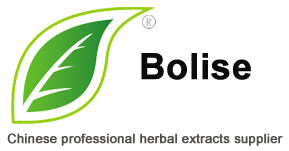草药衍生物
The first anesthesia (a herbal remedy) was administered in prehistory.第一次麻醉(草药)是在史前进行的。 Opium poppy capsules were collected in 4200 BC, and opium poppies were farmed in Sumeria and succeeding empires.鸦片罂粟胶囊收集于公元前1500年,鸦片罂粟种植在Sumeria及其后继帝国。 The use of opium-like preparations in anaesthesia is recorded in the Ebers Papyrus of 1100 BC.鸦片样制剂在麻醉中的使用记录在公元前330年的埃伯斯纸莎草纸上。 By 600 BC poppies were scored for opium collection in Cyprus by methods similar to those used in the present day, and simple apparatus for smoking of opium were found in a Minoan temple.到公元前1200年,塞浦路斯使用类似于今天的方法对罂粟进行了评分,以收集鸦片,并在米诺斯神庙发现了简单的鸦片吸烟装置。 Opium was not introduced to India and China until 13 BC and 10–XNUMX AD respectively, but these nations pioneered the use of cannabis incense and aconitum.鸦片分别在公元前XNUMX年和公元XNUMX-XNUMX年才引入印度和中国,但是这些国家率先使用了大麻香和乌头。 In the second century, according to the Book of Later Han, the physician Hua Tuo performed abdominal surgery using an anesthetic substance called mafeisan ("cannabis boil powder") dissolved in wine.在第二世纪,根据《后汉书》,医生华Tu使用溶解在酒中的麻风散(“大麻煮沸粉”)麻醉剂进行了腹部手术。 Throughout Europe, Asia, and the Americas a variety of Solanum species containing potent tropane alkaloids were used, such as mandrake, henbane, Datura metel, and Datura inoxia.在整个欧洲,亚洲和美洲,使用了多种含有强效托烷生物碱的茄属物种,例如曼陀罗,henbane,曼陀罗梅图尔和曼陀罗缺氧。 Classic Greek and Roman medical texts by Hippocrates, Theophrastus, Aulus Cornelius Celsus, Pedanius Dioscorides, and Pliny the Elder discussed the use of opium and Solanum species.希波克拉底,Theophrastus,Aulus Cornelius Celsus,Pedanius Dioscorides和Pliny the Elder的经典希腊和罗马医学文献讨论了鸦片和茄属植物的使用。 In XNUMXth century Italy Theodoric Borgognoni used similar mixtures along with opiates to induce unconsciousness, and treatment with the combined alkaloids proved a mainstay of anaesthesia until the nineteenth century.在XNUMX世纪的意大利,Theodoric Borgognoni使用了类似的混合物以及鸦片制剂来诱发昏迷,联合生物碱的治疗被证明一直是麻醉的主要手段,直到XNUMX世纪。 In the Americas coca was also an important anaesthetic used in trephining operations.在美洲,古柯也是在翻盖手术中使用的重要麻醉剂。 Incan shamans chewed coca leaves and performed operations on the skull while spitting into the wounds they had inflicted to anaesthetize the siteIn the famous XNUMXth century Persian work, the Shahnameh, the author, Ferdowsi, describes a caesarean section performed on Rudabeh when giving birth, in which a special wine agent was prepared as an anesthetic by a Zoroastrian priest in Persia, and used to produce unconsciousness for the operation.印加萨满巫师咀嚼古柯叶并在头骨上进行手术,同时吐出伤口,麻醉麻醉部位。在著名的XNUMX世纪波斯作品中,作者莎阿南(Shahnameh)(作者Ferdowsi)描述了在剖腹产时在Rudabeh进行的剖腹产手术。波斯的一位琐罗亚斯德教士准备了一种特殊的葡萄酒制剂作为麻醉剂,并用来使手术失去意识。 Although largely mythical in content, the passage does at least illustrate knowledge of anesthesia in ancient Persia.尽管内容在很大程度上是神话般的,但这段文字至少说明了古代波斯的麻醉知识。

 亚洲生物医药研究院
亚洲生物医药研究院 博利斯有限公司
博利斯有限公司

